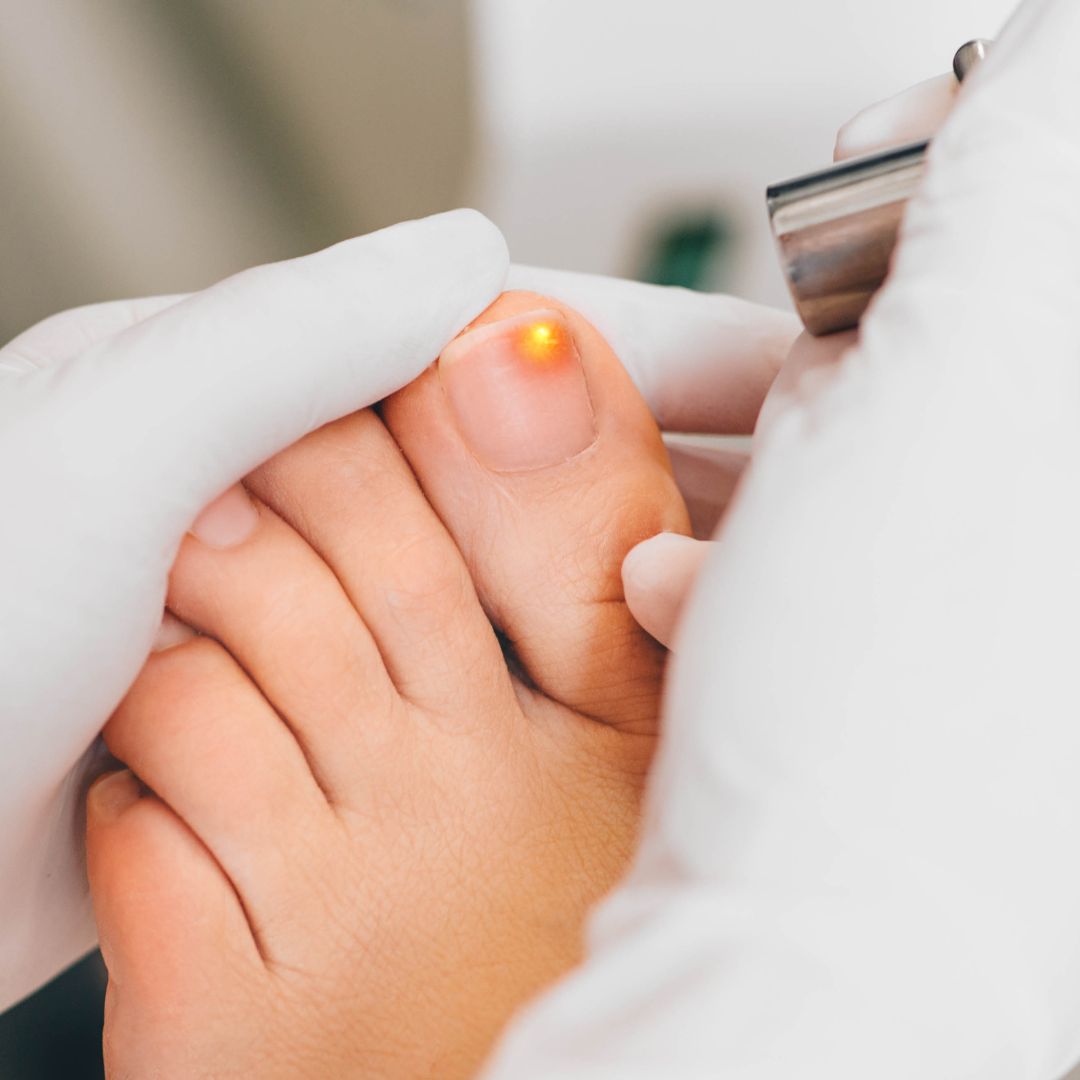Toenail fungus is more common than many people realize, especially for individuals leading active lifestyles. From athletes to busy professionals and those managing diabetes, the condition may go unnoticed until it becomes increasingly bothersome. The good news? With the right help, it’s treatable.
What Are the Symptoms of Toenail Fungus?
Toenail fungus, or onychomycosis, often starts as a small discoloration or change in the nail’s texture but can progress if not treated. Here are the most common signs and symptoms:
- Visual Changes: Your nail may turn yellow, white, or brown, and it might thicken or develop a brittle, flaky texture.
- Bleeding or Separation: Fungal infections can cause the nail to lift away from the nail bed, leading to bleeding or separation.
- Discomfort: You may feel tenderness, pain, or irritation, particularly when wearing shoes or walking.
It’s essential not to ignore the early signs. Toenail fungus might seem minor, but left untreated, it can cause lasting damage to your nails and potentially impact your daily life.
What Causes Toenail Fungus?
Several factors can increase the risk of developing toenail fungus. Here are the key contributors:
- Moist Environments: Excess moisture is a breeding ground for fungi. Sweaty socks and damp shoes that don’t allow for proper ventilation are common culprits.
- Where You Walk: Walking barefoot in communal spaces like locker rooms, swimming pools, and gyms exposes your feet to fungi, increasing your risk of infection.
- The Shoes You Wear: Tight or non-breathable footwear creates the perfect environment for fungal growth. Closed-toe shoes, in particular, trap heat and moisture, promoting infection.
Active adults and athletes may be at a higher risk given their frequent use of communal spaces and the demands on their feet. Meanwhile, individuals managing diabetes need to be especially mindful, as any untreated infection—including fungal nail infections—can lead to complications over time.
Why You Should See a Podiatrist
If you’ve tried over-the-counter remedies with little success or if the infection seems to be worsening, it’s time to consult a podiatrist. Here’s how a podiatrist can help:
- Accurate Diagnosis: A podiatrist, like Dr. Brad Herbst at Podiatry Associates of Florida, can evaluate your nails to confirm whether you’re dealing with a fungal infection or another condition that mimics it, such as psoriasis.
- Customized Treatment Plans: Over-the-counter topical treatments often lack the strength to completely resolve fungal infections, especially in stubborn or advanced cases. A podiatrist may recommend prescription-strength topical medications, oral antifungal drugs, or cutting-edge treatments such as laser therapy to target the infection at its root.
- Preventing Recurrence: Beyond just treating the current infection, a podiatrist helps you understand how to prevent fungal infections in the future. From better hygiene practices to selecting the right footwear, they’ll empower you to avoid recurrence.
- Special Care for Diabetic Patients: For those with diabetes, toenail fungus can be part of a larger health concern. A podiatrist provides the specialized care needed to protect your overall foot health.
Don’t Delay—Find Solutions Today
Whether you’re dealing with mild discomfort or a persistent infection, seeking professional help is crucial in stopping toenail fungus in its tracks. Dr. Brad Herbst at Podiatry Associates of Florida, San Jose Boulevard Division is here to help you every step of the way.
Your feet deserve expert care, and the solution is just a phone call away. Take the first step toward healthier nails today! Call our office at 904-268-6993.

